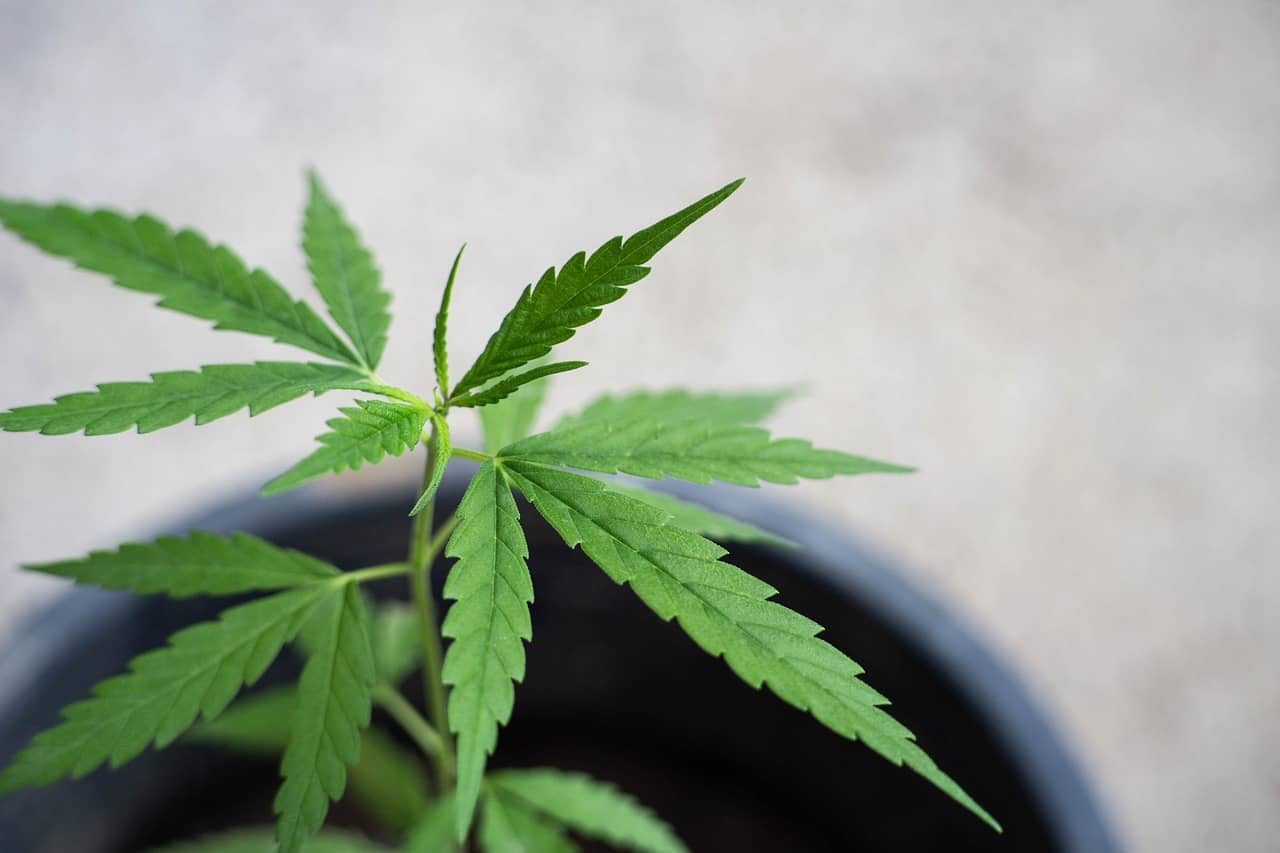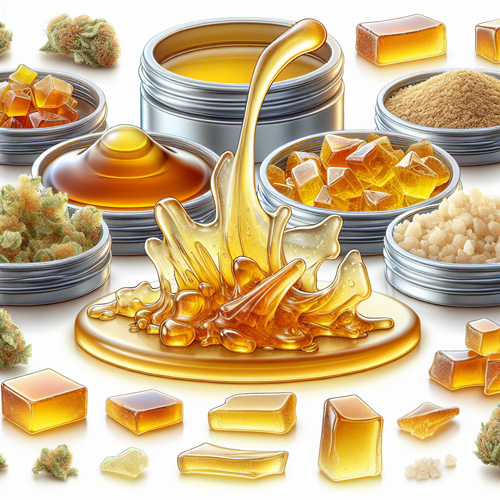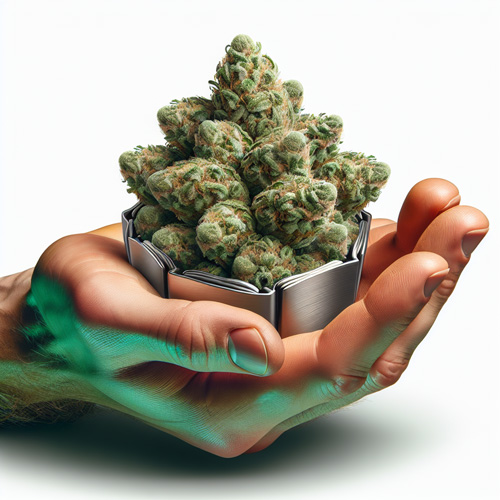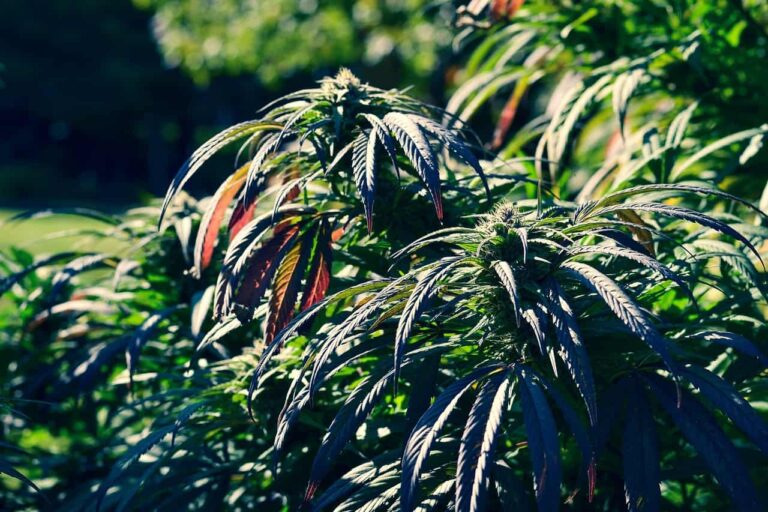
Understanding Hemp Plant Genetics
Definition of Hemp
Hemp, also known as cannabis sativa, is a dioecious plant with a rich genetic architecture that encompasses various traits and characteristics.
It is primarily cultivated for its industrial uses, including fiber production and seed yield. Understanding hemp plant genetics is crucial for the determination of quality in hemp and agronomic traits in hemp. The genetic variation within the hemp plant is influenced by factors such as sex determination, flowering time, and biochemical traits.
By studying and utilizing genetic markers and molecular markers, scientists can identify specific traits and potentially develop improved varieties of hemp. Additionally, research on the genetic basis of hemp can aid in optimizing cultivation practices, such as the influence of plant growth regulators like gibberellic acid, in order to enhance fiber yield and overall plant productivity.
Therefore, comprehending the genetic makeup and traits of hemp plants is essential for the successful cultivation and utilization of this versatile crop.
History of Hemp Plant Genetics
The history of hemp plant genetics is closely intertwined with human civilization. Hemp, or Cannabis sativa, has been cultivated for thousands of years as a source of food, fiber, and medicine. Its genetic structure and evolution have played a crucial role in shaping its diverse uses.
The taxonomic organization of the genus Cannabis is complex, with multiple species and subspecies. The two commonly used gene pools are Cannabis sativa and Cannabis indica. These gene pools have distinct characteristics and are associated with different types of cannabis plants. Cannabis ruderalis is a lesser known and utilized species of C. sativa.
The differentiation between marijuana and hemp occurs at a genome-wide level. Marijuana is typically cultivated for its psychoactive properties, while hemp is grown for its industrial applications. Hemp plants have a low THC (tetrahydrocannabinol) content, the psychoactive compound found in marijuana.
The cultivation of hemp and the structure of its genetics have evolved over time. Selective breeding has led to the development of hemp varieties with specific traits for fiber production, seed production, and other agronomic characteristics. Understanding hemp plant genetics is essential for improving the quality and efficiency of hemp cultivation.
The history of hemp plant genetics is deeply intertwined with human history, and its genetic structure and evolution have shaped the various uses and cultivars of cannabis sativa. The taxonomic organization of the genus Cannabis, including the differentiation between marijuana and hemp, is important for understanding the genetic basis of these plants.
Types of Cannabis Sativa
Cannabis sativa is one of the two commonly used gene pools in the taxonomic organization of the genus Cannabis. It is known for its distinct characteristics and is associated with different types of cannabis plants.
Understanding the different types of Cannabis sativa is crucial for those involved in the cultivation and utilization of cannabis for various purposes. Whether it is for fiber production, seed production, or other agronomic traits, knowing the specific traits and genetic variations within Cannabis sativa can greatly enhance the quality and efficiency of cannabis cultivation.
We explore the different types of Cannabis sativa and their unique features. Let’s delve into the genetic diversity and characteristics of this fascinating plant species to gain a better understanding of its potential applications.
Varieties of C. Sativa
Cannabis Sativa is a versatile plant with various varieties, each exhibiting unique traits and characteristics. Despite the existence of numerous strains, it is important to note that they all fall under the single species of Cannabis sativa L. Additionally, while Cannabis indica and Cannabis ruderalis are often considered as distinct varieties, from a biological perspective, they are all the same species with highly similar genetics.
Understanding the genetic variations within these different varieties of Cannabis Sativa is crucial for several reasons. Firstly, it allows us to identify and utilize specific traits that are desirable for various applications. For example, certain varieties may be more suitable for fiber production, while others may have higher concentrations of cannabinoids for medicinal purposes.
By studying the genetic architecture of these varieties, scientists can also determine the sex of the plants, which is important for effective cultivation. While Cannabis Sativa is typically a dioecious plant with separate male and female flowers, there are also monoecious varieties that produce both male and female flowers on the same plant.
Moreover, understanding the genetic basis of traits in Cannabis Sativa can help improve the agronomic characteristics of the plant, such as seed production and fiber yield. It also enables breeders to develop new varieties with desired traits, such as increased resistance to pests or specific cannabinoid profiles.
The different varieties of Cannabis Sativa, including Cannabis indica and Cannabis ruderalis, offer a wide range of genetic variations and characteristics. Understanding these variations is essential for maximizing the potential of the plant in various industries, such as agriculture, medicine, and manufacturing.
Genetic Markers in C. Sativa
Genetic markers play a crucial role in identifying and analyzing specific traits and genetic variations within Cannabis Sativa. These markers are specific regions of DNA that can be used to track the inheritance of particular traits or variations. By analyzing the patterns of genetic markers, researchers can gain valuable insights into the genetic architecture of Cannabis Sativa.
One important concept associated with the genetic architecture of Cannabis Sativa is quantitative trait loci (QTL). QTL refers to specific regions of the genome that are associated with variations in quantitative traits. These traits include characteristics such as cannabinoid and terpene profiles, which are important for the medicinal and recreational properties of cannabis.
The clustering patterns of QTL on specific linkage groups provide valuable information about the genetic basis of cannabinoid and terpene trait differences. These patterns indicate regions of the genome that are responsible for controlling the expression of these traits. By studying these patterns, researchers can identify the genes or regulatory elements involved in the biosynthesis pathways of cannabinoids and terpenes.
Furthermore, the hypothesis of shared epistatic interactions suggests that genes involved in cannabinoid and terpene biosynthesis pathways may interact with each other, leading to complex trait variations. This hypothesis highlights the importance of understanding the intricate relationships between different genes and their involvement in the production of specific chemical compounds.
Genetic markers and the concept of QTL provide powerful tools for understanding the genetic architecture of Cannabis Sativa. By analyzing the clustering patterns of QTL and studying the interactions between genes, researchers can gain valuable insights into the biosynthesis pathways of cannabinoids and terpenes, ultimately leading to improved breeding and cultivation strategies.
Female Flowers and Female Plants in C. Sativa
Female flowers and female plants play a vital role in the world of Cannabis sativa. Female flowers are responsible for the production of cannabinoids, the chemical compounds that give cannabis its medicinal and recreational properties. These flowers contain specialized structures called trichomes, which are tiny resin glands that produce cannabinoids, including THC and CBD.
The presence of female flowers is crucial for the development of seedless flowers, also known as sensimilla. These flowers have higher cannabinoid concentrations compared to flowers that develop seeds. Cultivators often prefer seedless flowers for their potency and quality. Female plants are the primary source of sensimilla, making them highly valued in the cannabis industry.
In contrast to female plants, male plants produce pollen sacs instead of flowers. These sacs release pollen, which is necessary for the fertilization of female flowers. However, in the cultivation and breeding of Cannabis sativa, male plants are usually removed from the growing area to prevent pollination and seed development in female plants.
By keeping female plants separate from male plants, cultivators can maintain seedless flowers and maximize cannabinoid production. This practice allows for the preservation and development of desired traits in cannabis varieties through selective breeding.
In conclusion, female flowers and female plants in Cannabis sativa hold significant importance. Female flowers are responsible for cannabinoid production and the development of seedless flowers. Female plants are prized for their ability to produce high-quality sensimilla. Understanding the differences between male and female plants is crucial for the successful cultivation and breeding of cannabis varieties.
Dioecious and Monoecious Plants in Hemp Cultivation
Dioecious and monoecious plants play significant roles in hemp cultivation, each with their own advantages and disadvantages. Dioecious plants are those that have separate male and female plants, while monoecious plants have both male and female flowers on the same plant.
In dioecious hemp plants, male and female individuals exist separately. This means that pollen production and seed development occur in male plants, while female plants produce the desired flower buds. This separation allows for greater control over breeding and cultivation, as male plants can be removed to prevent fertilization and seed production in the female plants. Dioecious plants are generally preferred for industrial hemp production due to their ability to produce high-quality fiber and seed crops.
On the other hand, monoecious hemp plants have both male and female flowers on the same plant. This can be advantageous in terms of space and resource utilization, as there is no need to grow separate male plants for pollination. Monoecious plants are more commonly used in seed production and can potentially result in higher seed yields.
However, monoecious plants have the drawback of introducing the risk of self-pollination, which can lead to inconsistent traits and genetic variation in the offspring. Dioecious plants, with their separate male and female individuals, allow for greater control over genetic variation and the preservation of desirable traits through selective breeding.
While dioecious and monoecious plants both have their advantages and disadvantages in hemp cultivation, dioecious plants are often preferred for their ability to ensure seedless flower production and greater control over genetics. Monoecious plants, on the other hand, offer potential advantages in terms of resource utilization and seed production, but with the risk of self-pollination.
Industrial Hemp as a Subspecies of Cannabis Sativa Subsp. Indica
Industrial hemp, a subspecies of Cannabis Sativa Subsp. Indica, is a versatile plant cultivated for its seed and fiber production. Unlike other types of cannabis, industrial hemp contains low amounts of THC (tetrahydrocannabinol), the psychoactive compound responsible for the “high” associated with marijuana.
One of the defining characteristics of industrial hemp is its fibrous and sturdy stalks, which make it ideal for the production of various industrial and commercial products. The fiber obtained from the hemp plant is used to create textiles, paper, building materials, and even biofuel. Additionally, hemp seeds are highly nutritious and are used to produce food products, including cooking oil, protein powder, and snacks.
Compared to marijuana varieties of cannabis, industrial hemp is typically grown for its fiber and seed rather than its medicinal or recreational qualities. The cultivation of industrial hemp is regulated and requires specialized licenses due to its association with cannabis. This regulation ensures that the THC content remains below the legal limit, making industrial hemp a non-intoxicating and safe crop to grow.
Industrial hemp, classified as Cannabis Sativa Subsp. Indica, is a valuable subspecies of cannabis primarily grown for its seed and fiber. Its low THC content distinguishes it from other types of cannabis, making it suitable for various industrial applications and nutritional purposes.
Characteristics of Hemp Plant Genetics
Understanding the characteristics of hemp plant genetics is crucial for the successful cultivation and production of industrial hemp. Hemp varieties, which belong to the cannabis sativa species, exhibit specific genetic markers that determine their traits and characteristics.
One important aspect of hemp genetics is the sex determination in hemp plants, as hemp can be dioecious (having male and female flowers on separate plants) or monoecious (having both male and female flowers on the same plant). Additionally, the genetic variation and complexity of traits in hemp play a significant role in determining the quality and productivity of the plant for specific applications such as fiber production or seed yield.
By gaining insights into the genetic architecture and molecular markers of hemp, researchers and farmers can make informed decisions to optimize the agronomic traits and maximize the potential of this versatile crop.
Genetic Variation in Hemp Cultivation
Genetic variation in hemp cultivation plays a crucial role in the development of diverse and improved hemp varieties. Several factors contribute to this variation, including cultivation methodologies, environmental conditions, and breeding techniques.
Cultivation methodologies such as planting density, nutrient management, and irrigation practices can influence the genetic variation in hemp. Different growing techniques can lead to variations in plant size, yield, and cannabinoid content. Additionally, environmental conditions such as temperature, humidity, and sunlight exposure also impact the genetic diversity of hemp plants. These conditions can influence the expression of various traits and adaptability to specific climates.
Breeding techniques are another important factor in genetic variation. Breeders use advanced methods such as genetic markers and molecular tools to identify desired traits and create new varieties. Selective breeding helps to improve traits such as fiber production, seed yield, and cannabinoid content.
Understanding and leveraging genetic variation is crucial for developing hemp varieties suited to specific climates and with desired traits. By selecting plants with favorable genetic characteristics, breeders can enhance crop productivity, disease resistance, and overall crop quality. The ability to adapt to different environmental conditions and meet market demands is paramount for sustainably scaling hemp cultivation.
Genetic variation in hemp cultivation is influenced by cultivation methodologies, environmental conditions, and breeding techniques. Harnessing this variation is essential for developing high-performing hemp varieties that are well-adapted to specific climates and possess desired traits.
Molecular Markers for Quality Assurance in Hemp Cultivation
Molecular markers play a crucial role in quality assurance in hemp cultivation. These markers are specific segments of DNA that can be identified and linked to specific traits or genetic characteristics. By using molecular markers, growers and breeders can assess the genetic composition and quality of hemp plants with precision and accuracy.
Molecular markers provide valuable information about the genetic diversity and variability within hemp populations. They can be used to identify specific traits, such as desired cannabinoid profiles or disease resistance markers. By analyzing the genetic composition of hemp plants using molecular markers, growers can ensure consistency and reliability in their crop production.
Using molecular markers for quality assurance in hemp cultivation allows growers to select plants with the desired genetic traits. This not only ensures that crops have the desired cannabinoid content or fiber quality, but also helps in developing new hybrid varieties with improved characteristics. By using molecular markers, growers can make informed decisions regarding breeding and cultivation practices, leading to higher yields, enhanced product quality, and overall success in hemp production.
Molecular markers are essential tools for quality assurance in hemp cultivation. They enable growers to assess the genetic composition of hemp plants and make informed decisions about breeding and cultivation practices. By using molecular markers, growers can ensure consistency and reliability in their crop production, leading to improved product quality and overall success in the hemp industry.
Genetic Architecture for Traits Determination in Hemp Cultivation
Genetic architecture plays a crucial role in determining various traits in hemp cultivation. Understanding how different genes and genetic variations influence the expression of these traits is essential for efficient breeding and cultivation practices.
Various complex traits, such as cannabinoid content, fiber quality, and flowering time, are determined by a network of genes and their interactions. Each trait is influenced by multiple genes, each with its own contribution to the overall phenotype observed in hemp plants. Moreover, different genetic variations, such as single nucleotide polymorphisms (SNPs), insertions, and deletions, can further influence the expression of these traits.
The study of genetic architecture allows us to dissect the genetic basis of these traits and identify the specific genes and genetic variations responsible for them. This knowledge can be utilized to develop targeted breeding strategies, such as marker-assisted selection, where molecular markers linked to specific traits of interest are used to screen and select plants with desired genetic characteristics.
Molecular markers, such as DNA-based markers or SNP arrays, are invaluable tools for understanding the genetic architecture of traits in hemp cultivation. By analyzing the genetic composition of different hemp populations, researchers can identify the genetic markers associated with specific traits. This information greatly assists breeders in selecting parent plants for hybridization, leading to the development of new hemp varieties with improved traits.
Genetic architecture plays a central role in trait determination in hemp cultivation. Understanding the complex network of genes and genetic variations underlying these traits allows for targeted breeding strategies and the development of new and improved hemp varieties. Molecular markers are essential tools in deciphering the genetic basis of traits and guiding breeding efforts towards desired characteristics in hemp cultivation.
Complex Traits Affecting Quality and Production in Hemp Cultivation
In hemp cultivation, the quality and production of the crop are influenced by various complex traits. These traits have a significant impact on the overall success of hemp cultivation and play a crucial role in determining the profitability of the crop.
One of the important traits in hemp cultivation is flowering time. The timing of flowering affects not only the harvest schedule but also the overall quality of the plant. Early flowering can result in reduced fiber yield and seed production, while late flowering may lead to lower cannabinoid content. Therefore, achieving the optimal flowering time is essential for maximizing both quality and production in hemp cultivation.
Fiber yield is another crucial trait that directly affects the productivity of hemp cultivation. The quality and quantity of fiber produced by the plant determine its value in various industrial applications. Traits such as fiber length, strength, and fineness play a critical role in determining the quality of the hemp fiber. Breeders focus on developing varieties with improved fiber traits to enhance the productivity and value of the crop.
Seed production is also an important trait in hemp cultivation, particularly for farmers focused on producing hemp seeds. Traits such as seed yield and seed quality, including oil and protein content, determine the success of seed production. Varieties with high seed production potential and desirable seed traits can increase the profitability of hemp cultivation.
Biochemical traits, including cannabinoid content and terpene profiles, are traits of significant interest in hemp cultivation. These compounds are responsible for the therapeutic and sensory properties of the plant and have a direct impact on the market value of hemp products. Understanding the genetic basis of these biochemical traits is crucial for developing hemp varieties with desirable cannabinoid and terpene profiles.
The complex traits affecting quality and production in hemp cultivation include flowering time, fiber yield, seed production, and biochemical traits. Understanding the genetic basis of these traits is crucial for developing targeted breeding strategies to improve the quality and productivity of hemp crops. By selecting varieties with optimal trait values, farmers can maximize their yields and produce high-quality hemp for various applications.
Methods for Studying Hemp Plant Genetics
Understanding the genetic makeup of hemp plants is essential for breeders and researchers to develop improved varieties with desirable traits. Various methods are employed to study hemp plant genetics, including molecular markers, genetic mapping, and genomics.
Molecular markers, such as DNA sequences, are used to identify and track specific genes or regions of the genome associated with particular traits. Genetic mapping involves creating genetic maps to locate and study the genes responsible for specific traits in hemp.
Genomics, on the other hand, involves analyzing and interpreting the entire genetic information of the hemp plant to uncover the genetic architecture behind complex traits. These methods provide valuable insights into the genetic variation and potential traits in hemp, enabling breeders to make informed decisions in their cultivation and breeding programs.
By understanding hemp plant genetics, breeders can optimize traits like fiber yield, seed production, and biochemical composition to meet the demands of the market and improve the overall success of hemp cultivation.
Genotyping Techniques for Sex Determination in Hemp Plants
Genotyping techniques have revolutionized the understanding of sex determination in hemp plants. These techniques utilize molecular markers and genes to identify the sex of hemp plants accurately.
One such gene involved in sex determination is the ARF2 gene. It plays a crucial role in the development of male flowers. The ARF5 gene, on the other hand, is responsible for the development of female flowers in hemp plants. These genes are essential in differentiating the genders of hemp plants.
Another significant molecular marker in sex determination is the bZIP transcription factor 16-like gene. This marker helps in the identification of male plants in hemp populations.
Furthermore, the gibberellic acid insensitive gene (GAI) has been found to regulate the differentiation of sex traits in hemp plants. Its involvement in the control of flower development has proven valuable in determining the sexual characteristics of hemp plants.
By utilizing these molecular markers and genes, researchers can accurately determine the formation of male and female flowers in hemp plants. This knowledge is crucial in various aspects of hemp production, from ensuring proper pollination for seed production to maximizing fiber yield in fiber production systems.
Genotyping techniques using molecular markers, such as ARF2, ARF5, bZIP transcription factor 16-like, and GAI, have greatly advanced our understanding of sex determination in hemp plants. These markers and genes play a significant role in identifying the development of male and female flowers, enabling better management and utilization of hemp crops.

































